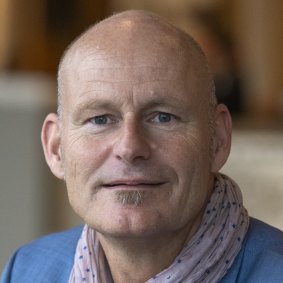
AGL, which also owns the Loy Yang A coal-fired power station in Victoria’s Latrobe Valley, regards the trial as a potentially significant breakthrough.
“We don’t want to produce energy when prices are negative,” Brokhof said.
“From a financial and economical point of view, there is quite an incentive to explore this further.”
Coal has been the backbone of Australia’s power grid for more than half a century, but the fossil fuel is also a dominant source of greenhouse gas emissions that pollute the air and are dangerously heating the planet.
The United Nations wants rich countries to phase out coal by as soon as 2030 to help avert the worst impacts of global warming. The Albanese government’s legislated target to slash emissions by 43 per cent by 2030 relies heavily on replacing coal plants with more wind, solar and hydropower.

AGL chief operating officer Markus Brokhof.Credit: Eamon Gallagher
However, the threat of unprofitable coal-fired power plants being forced to close ahead of schedule has become a worry for grid planners and state governments amid warnings that not enough renewables, storage and power lines are being built to avoid blackouts or price spikes at times of low wind and sunlight once more coal retires.
Origin Energy, which had planned to close its giant Eraring coal power station by as early as August next year, reached an agreement with the NSW government in May to keep its plant running until at least 2027. The Victorian government has also cut secret deals to support two coal plants – Yallourn and Loy Yang A – to ensure they do not close prematurely and leave the state vulnerable.
Brokhof said AGL needed to gain more data from the Bayswater two-shifting trial to understand any risks for “wear and tear” before it would consider implementing it. Repeatedly ramping up and down could possibly shorten plant equipment’s lifespan and require more maintenance.
Loading
But if successful, two-shifting could boost the prospects of AGL’s remaining coal plants staying viable until their intended closure dates next decade, Brokhof said.
“With this kind of operation, we would be able to stay in the market and still make money,” he said.
Other owners of coal-fired power stations across the eastern coast grid have also been working on ways to make their plants more flexible and able to withstand rock-bottom or negative daytime wholesale prices, with some generators now able to dial back output to below 30 per cent of their maximum capacity.
Last month, Origin Energy announced it had gained approval from the market operator to reduce the minimum load of each of Eraring’s four generating units by a further 14 per cent to 180 megawatts – just 25 per cent of their nameplate capacity.



























